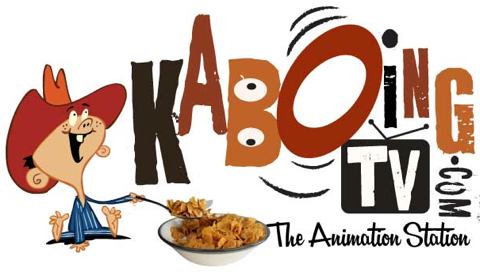
Animation is an expensive business, there’s no doubt about it. Besides being time-consuming (typically 6 months for a half-hour show) it also requires the talents of a vast number of people, from designers, writers, storyboard artists, animators, etc. etc. On the flipside, animation tends to have a very long life. For instance, we still watch Snow White and the Seven Dwarfs today, over 70 years after it was first released.
With such a large outlay of capital, animation has been scattered among various genres in the past. On the one hand, you had Disney with it’s big budget theatrical releases, on the other side, indie filmmakers were putting out shorts from the their bedrooms.
The arrival of the computer changed all that, and today, a film can literally be a one-man show made for a few thousand dollars. Having said that, a few thousand dollars is still a few thousand dollars and plenty of animators I know don’t happen to have that kind of money laying around to fund a film.
The historical (and risky) stratedgy is to make one film, shop it around and use it to get commissions and the like in order to fund a second. The cycle thus repeats giving the animator a somewhat healthy revenue stream that he or she can use to produce personal films on topics they enjoy. A great example of this is PES, who routinely undertakes commercials in order to put out such gems as Western Spaghetti.
The arrival of the internet changed everything. Besides changing distribution (YouTube) and the actual production itself (The Secret of Kells was put together in three very different continents), it has spurred the idea of “crowdsourcing”.
Crowdsourcing is a principle where many people doing a little piece of the work collectively contrbutes to a whole. The principle has been used in software for years. In fact the machine I’m typing this on right now runs on Linux, which has thousands of programmers actively contributing to its development.
With that in mind, the idea of crowdsourcing animation is that many people can donate to the capital funds needed to get a project off the ground. An excellent recent example is Joe Murray, creator of Rocko’s Modern Life and Camp Lazlo. His wish to create a creator-driven vidoe streaming website (Kaboing TV), which he describes as
…an animation and Cartoon Web channel with content worthy of television if television had the space and the balls to do it.
While admirable, Kaboing TV is unlikely to attract investment unless Joe has some proof that the idea will be successful. Enter Frog in a Suit, desribed as being:
…our chance to “turn the engine over ,and get the car onto the track.
In other words, the short is the nectar that entices the bee to come over and get cozy with the flower. Joe is certain that there is a market for a cartoon channel on the interent. The likes of Channel Frederator and Cartoon Brew TV all of these offer animation podcasts or shorts with each having a dedicated following. With this in mind, he has decided to reach out to the community and fans alike for some help getting the project off the ground.
Using the website Kickstarter to handle the nuts and bolts, Joe is already well on his way to achieving his goal. The interesting thing is, he only has 176 backers! He’ll need a few more before he’s finished, but it is astonishing that he can get a few shorts made with as little people as this. In contrast, the Simpsons and other mainstream cartoons require audiences in the millions in order to make them cost effective.
The idea has worked before, Nina Paley asked fans to help out when she was unable to release her film “Sita Sings the Blues” without coughing up $50,000 to copyright owners. Having gone into debt just making the film, Nina asked for donations in order to ensure her film would be seen. She managed to achieve her goal and today, with her film released under a Creativ Commons license, you can download it for free and share it with as many people as you like.
Crowdsourcing is not the ideal funding source in my opinion but it is the best if you are an independent filmmaker. New York hero Bobby Miller has been using the idea to fund the DVD release of his film, Tub, which will help promote his film without the need for exepensive marketing.
Until now, there has been a wide gulf between animation that was produced by a mainstream media company and those by independents. Through crowdsourcing, we may see a narrowing of this gap with the rise of medium-cost, independently made films that are of high quality, medium cost and still achieve satisfactory market acceptance. Time will tell, but for now, things look good.
UPDATE: All-round nice guy Lee Rubenstein has decided to fund his series, Fred & Earl through Kickstarter. In return he’s offering some unique gifts to doners, including the chance to voice a character in a future episode! Click here to get involved.


